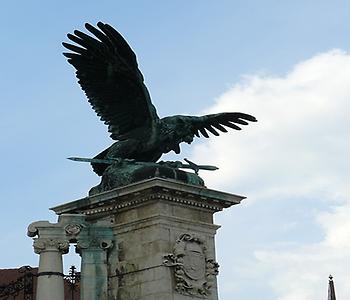Hungary#
Hungary's current borders were first established by the Treaty of Trianon (1920) after World War I, when the country lost 71% of its territory, 58% of its population, and 32% of ethnic Hungarians.
On 23 October 1989, Hungary again became a democratic parliamentary republic, and today has a high-income economy with a very high Human Development Index. Hungary is a popular tourist destination attracting 10.675 million tourists a year (2013).
It is home to the largest thermal water cave system and the second-largest thermal lake in the world (Lake Hévíz), the largest lake in Central Europe (Lake Balaton), and the largest natural grasslands in Europe (the Hortobágy National Park). The country's capital and largest city is Budapest.
- Hungary has the largest boundary with Slovakia which is approximately 676 km long.
- Hungary has the smallest boundary with Slovenia which is approximately 102 km long.
- The largest river is Danube which is 2850 km long.
- The biggest export partner of Hungary is Germany.
- The biggest import partner of Hungary is also Germany.
- There are 5 seaports in Hungary
Special Facts about Nobel Prize Winners#
- There are 9 Hungary-born Nobel Prize winners but none from that country in the last ten years.
Tourist Attraction#
The legendary Danube River flows serenely past Budapest's Castle District.National Facts of Hungary#
- The national bird of Hungary is Turul.
- Tulip is the national flower of Hungary.
- The national sport of Hungary is Football.
- The national dance of Hungary is Czardas.

Turul
Foto source: PixaBay
Foto source: PixaBay
References#
- Text marked as italic is taken from https://en.wikipedia.org/wiki/Hungary unter CC
- Yu, A. Z., et al. (2016). Pantheon 1.0, a manually verified dataset of globally famous biographies. Scientific Data 2:150075. doi: 10.1038/sdata.2015.75